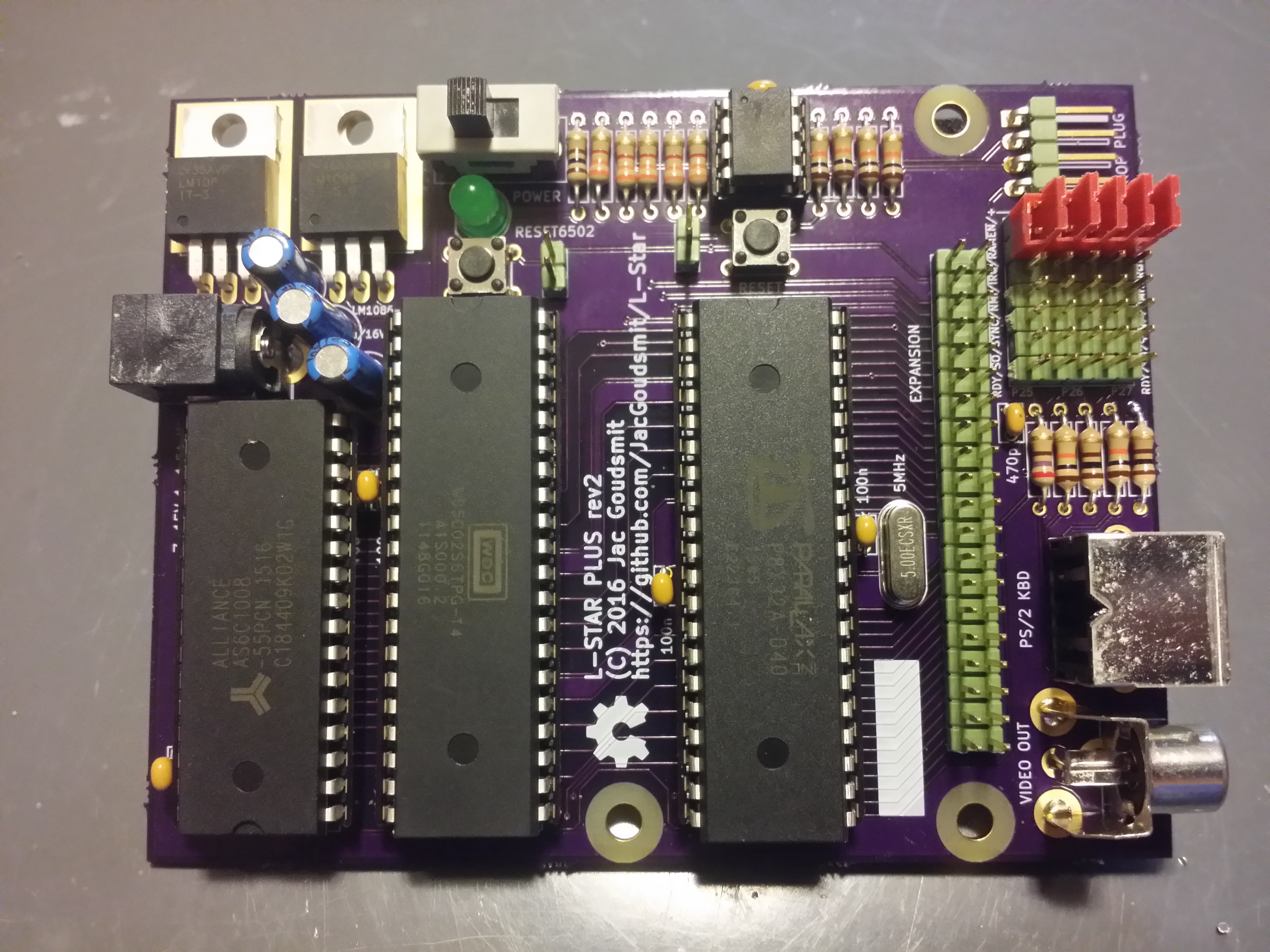The L-Star project has been getting some attention recently, so I decided to do some work on the hardware.
I added a couple of missing pull-up resistors, so that the circuit keeps working correctly, even if you remove the Prop Plug from it. I also made the footprint for resistors a little bigger so that common carbon film resistors fit nicely. And I added an On/Off switch so you can turn the system off and don't have to go searching for the power cable that fell down behind your desk when you want to power it up again.
Even though there are more components and all the resistors take up more space, it was still possible to reduce the board size significantly. I didn't quite get it down to the "magic" 80x100mm Half Euro-card size, but I got pretty close: the Rev. 2 board is 12% smaller (in surface area) than the Rev. 1 board.
I ordered a set of boards from OSHPark, and created a shared project on the OSHPark website too. I also created a project at Mouser. The result looked somewhat like this.

Update: Hold the Phone!
Unfortunately once I got the PCB's back from OSHpark and put it together, I noticed that I had made a few small but annoying mistakes.
For one thing, I added the A16 address line for the 128KB SRAM chip to the jumper block, but I added it to the wrong jumper. That means with the Rev.2 PCB, it's not possible to connect the ~RAMEN line to P27 with a jumper, and that really really REALLY is the pin I would like to connect it to.
Another problem: The smaller board size made it cheaper to produce, but with the added on-off switch, the components are so close together that I have trouble pushing the reset button for the 65C02. My finger just doesn't fit between the LED, the chip and the 2-pin header to reach the button.
So the bad news is that I'm going to have to design a third version of the PCB, even though the first two versions technically work just fine. I guess the good news is that I didn't make a production run of the Rev.2 board. And I have a chance to fix another thing that's been nagging me for a while: the solder islands were too small. More news soon!
 Jac Goudsmit
Jac Goudsmit
Discussions
Become a Hackaday.io Member
Create an account to leave a comment. Already have an account? Log In.
Great job Jac! I built the breadboard version of the L-Star and had a blast with it. One easy fix for that reset button would be to just order a tactile switch with a longer actuator arm. Something maybe like this: http://www.digikey.com/product-search/en?mpart=1-1825910-4&v=450 . Keep up the good work!
Are you sure? yes | no
Thanks for the suggestion!
Are you sure? yes | no